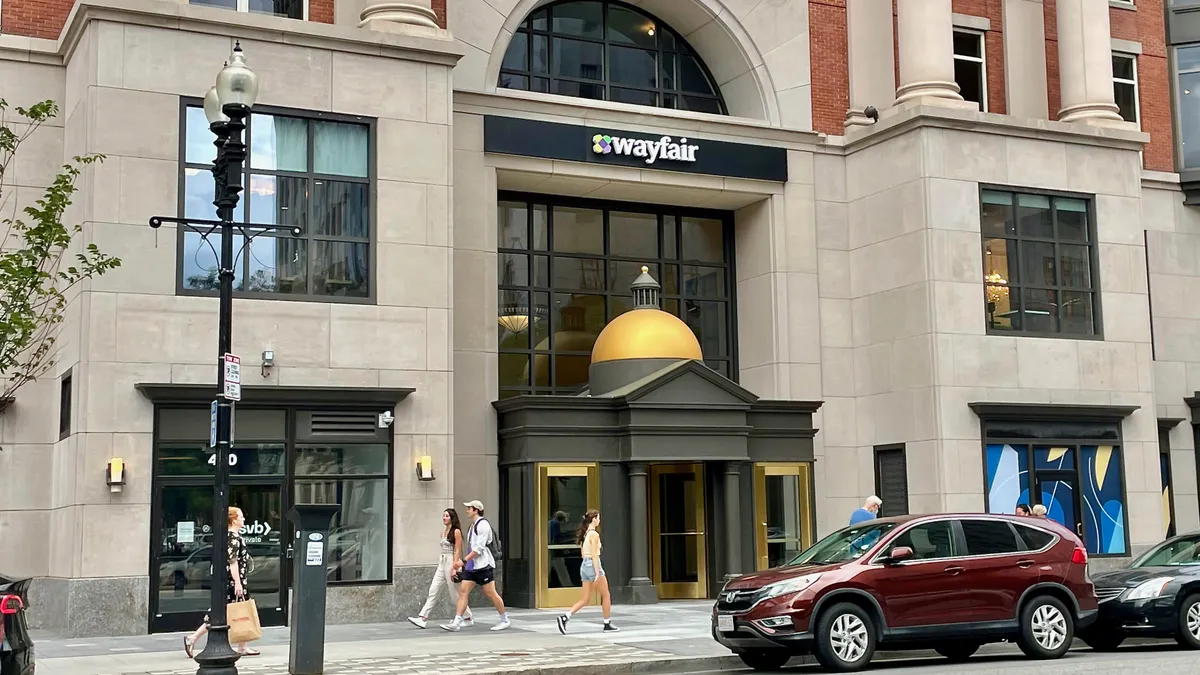Dive Brief:
- Wayfair on Thursday reported first quarter net revenue fell 7.3% year over year to $2.8 billion. The company’s U.S. revenue fell 5% year over year to $2.4 billion, while international declined 20.4% to $359 million.
- While the online retailer’s EBITDA improved in the quarter — reporting a loss of $14 million versus a loss of $113 million a year ago — its operating and net loss widened. Wayfair’s operating loss grew 11.9% from last year to $347 million, while its net loss increased 11.3% to $355 million.
- The company’s active customer base fell 14.6% year over year to 21.7 million. From the previous quarter, active customers declined by 400,000.
Dive Insight:
While revenue and customers continued to diminish in the quarter, Wayfair executives touted that the company is on its way to profitability.
The company expects to be EBITDA positive as early as Q2, Chief Financial Officer Kate Gulliver said on a call with analysts Thursday. Wayfair has been taking steps to reduce costs, including enacting layoffs. The company in January announced it was laying off nearly 2,000 employees, or 10% of its global workforce. That followed an earlier round of layoffs in August affecting 870 employees, or 10% of its corporate workforce.
At the onset of the pandemic, Wayfair benefited as consumers actively sought out more products for their homes and shifted spending online to avoid unnecessary trips to stores. But as pandemic-related restrictions eased, spending shifted away from the home to other areas like experiences.
That pullback in home goods demand is particularly apparent online, according to GlobalData Managing Director Neil Saunders.
While Wayfair has opened a couple of stores in recent years, the majority of its operations are still online. Physical retail — whether through stand-alone stores, pop-ups or wholesale partnerships — has become a critical piece of the playbook for digitally native brands in recent years as the cost associated with customer acquisition becomes increasingly high online. Wayfair executives said they see potential in expanding its physical footprint in the future and are planning a larger-format Wayfair store set to open in the spring of 2024.
Still, the road ahead remains unclear for Wayfair. While it has been able to hold onto much of the sales boost it achieved during the height of the pandemic, competition is heating up. Ikea late last month announced it was investing $2.2 billion over the next three years to fuel its omnichannel growth strategy in the U.S.
“All of this means Wayfair will be running up a down escalator which is speeding up,” Saunders said. “Given it is weighted down by debt and a dysfunctional trading and balance sheet, the prospects do not look all that promising.”














